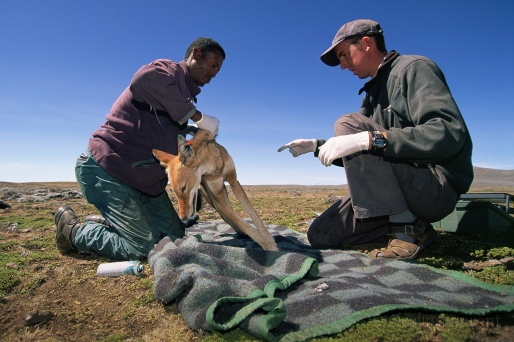James Orr
Is there a link between the decline in vulture populations and the spread of mammalian viruses?
Vultures are the only obligate scavengers among the terrestrial vertebrates. By disposing of dead organisms these unique birds provide a valuable ecosystem service. Vultures are so ecologically important that they act as keystone species wherever they are found – Caroline’s blog has more details on this.
Despite their importance, there isn’t a very positive portrayal of vultures in popular culture. The only (semi) positive depiction of vultures I can think of is from the jungle book! Darwin himself famously used the word “disgusting” to describe these birds of prey. I don’t think he would have counted vultures as an “endless form most beautiful”.

Vanishing vultures
14 out of the 23 vulture species are in danger of extinction, with old world (Eurasian and African) vultures more at risk than new world (American) vultures. According to the IUCN’s red list, 11 of these species are critically endangered. For example, white-rumped vultures (Gyps bengalensis) have experienced population declines of more than 99% in thirty years. These vultures were the most abundant bird of prey in the 1980s with numbers in the millions, but today only a few thousand individuals are found in the wild.
Habitat loss and climate change can partly explain this crash in vulture populations, but poisoning (deliberate and accidental) is thought to be the main issue. Vultures are adapted to resist toxic substances, however, widespread and artificial toxins build up in their tissues and may eventually reach lethal concentrations.
The anti-inflammatory drug, diclofenac, became widespread in veterinary practices (particularly in India) at the beginning of the 1990s and quickly became vulture’s kryptonite – see here for more information. Lead poisoning is another common threat to vultures. A carcass will become laced with lead if the animal is shot with lead bullets during trophy hunting or pest control. The Californian condor (Gymnogyps californianus) is an example of a vulture that suffers greatly from lead poisoning.

Virus outbreaks
As vulture populations decline a seemingly unrelated ecological phenomenon is also occurring. Over the past thirty years, there has been an increase in the number of virus outbreaks in populations of large mammals, particularly large carnivores.
For example, canine distemper virus has recently become much more common in wild carnivore populations. It was thought that felids were immune to the virus, but in recent years outbreaks of canine distemper have occurred in large cat populations from a number of different regions.
Rabies is another virus that has been affecting wild carnivore populations more and more in the recent years. Ethiopian wolves (Canis simensis) are the most rare canid species in the world and are Africa’s most endangered carnivore. Rabies is one of the most serious threats to these incredible animals. Outbreaks of this virus in the early 1990s, in 2003 and in 2008 coincided with dramatic drops in Ethiopian wolf populations.

Correlation or Causation?
As vulture numbers have declined mammalian viruses have spread. However, does this correlation mean causation?

These two phenomena may not be related. For instance, another factor, such as the increased frequency of livestock-wildlife interactions, may be causing the upsurge of virus epizootics. However, there is a school of thought that suggests that there is more than just a correlation between viruses outbreaks and vanishing vultures.
The hypothesis
As vulture populations have declined, the community composition of scavengers at carcasses has shifted; opportunistic species such as feral dogs and rats are the new bin men. It has been hypothesized that this shift towards mammalian scavengers has increased the spread of mammalian diseases. Vultures are obligate scavengers and are therefore highly specialized. The pH of their stomach fluids can be as low as 1 (very, very acidic). This acidity results in the destruction of any viruses that are consumed with carrion. The new scavengers, feral dogs and rats, are generalists and have no specific scavenging adaptations, such as highly acidic stomachs. This means that the new scavengers are acting as reservoirs and transportation for mammalian viruses.
Feral dogs and rats are also less efficient scanvengers and so remains of animals take longer to be cleaned up, which results in a higher transmission rate of viruses. Ogada and colleauges have shown in a number of publications that with no vultures, carcasses can act as “hubs of infection”.

It is unclear as to how much of an impact the crash in vulture populations has had on the increased transmission of mammalian viruses but it does look as though there is more than just a correlation between the two phenomena.
The decline of these birds of prey is not only ecologically significant but it is also culturally significant. Certain ethnic groups such as the Parsi in Indian and many others groups in Nepal, Mongolia and Tibet have practiced sky burials for hundreds of years. With lower numbers of vultures it takes much longer for corpses to be consumed, which creates hygiene issues. As a result of this, the age-old practices of sky burials are coming to an end.
Vultures are the most threatened avian group in the world. They are ecologically and culturally important and serious efforts must be made to reverse their population trends. Vultures may not be the most beautiful creatures on the planet but they are certainly one of nature’s “endless forms most valuable”.
References:
Ogada et al., 2012. Dropping dead: causes and consequences of vulture population declines worldwide. Annals of the New York Academy of Sciences, 1249(1), pp.57-71.
Ogada et al., 2012. Effects of vulture declines on facultative scavengers and potential implications for mammalian disease transmission. Conservation Biology, 26(3), pp.453-460.
Houston, D. C., and J. E. Cooper. 1975. The digestive tract of the White-back Griffon Vulture and its role in disease transmission among wild ungulates. Journal of Wildlife Diseases 11:306–313.
A fantastic piece by Elizabeth Royte for National Geographic with stunning images (including the feature image of this article) by Charlie Hamilton James (http://charliehamiltonjames.com) can be found HERE
